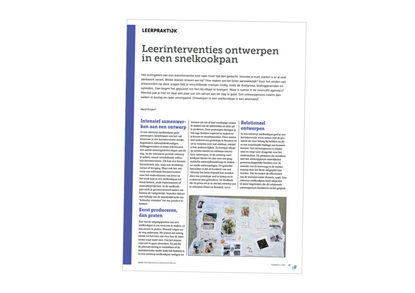A leading hospital wanted to redesign its advanced training program for oncology nursing. The ambition was to create a 'state of the art' curriculum that would keep up with developments in the field, so that the hospital could train oncology nurses for their own as well as for other organisations. It was also important that the program would meet external accreditation requirements.
Approach
We organized a five-day design pressure cooker, in close cooperation with relevant stakeholders, including the nurses themselves.
In advance, we made an inventory of critical incidents in the work of oncology nurses: what is the essence of their role, which professional challenges should they be able to cope with?
These practical descriptions formed the input for a design week. Together with a small team (oncology nurses, a manager and learning consultants), we made a global design for the course. Every day we took one design step:
- Day 1: analyzing which knowledge and skills are required, based on the critical incidents.
- Day 2: defining performance standards: when does an oncology nurse act adequately in critical situations? What does he or she do?
- Day 3: designing a competence assessment for the most essential work situations: how can an oncology nurse show that he or she has mastered the skills to act professionally in the most critical work situations?
- Day 4: creating learning activities that will enable nurses to acquire the necessary skills.
- Day 5: translating the learning activities into a global curriculum design.
At the end of each working day, we presented the results to a group of 'critical friends': fellow oncology nurses, nursing specialists, team leaders, and doctors. They gave feedback and tips on how to improve the design. Perhaps even more importantly, these sessions created an ever-increasing level of involvement with the new program. Each of these sessions led to an enormous acceleration and added to a positive vibe. Our role was to guide these sessions and to make room for all the different perspectives and ideas, and to use them to strengthen the design.
Impact
At the end of the design week, the overall design of the new learning program was finished and submitted to the steering committee. They were unanimously positive and gave the go-ahead to fine-tune and finish it. A job that was taken up by one of the internal learning consultants, with us as a sparring partner from outside. This is typical of the result: in addition to a solid design, we had also created a strong sense of enthusiasm and ownership.
